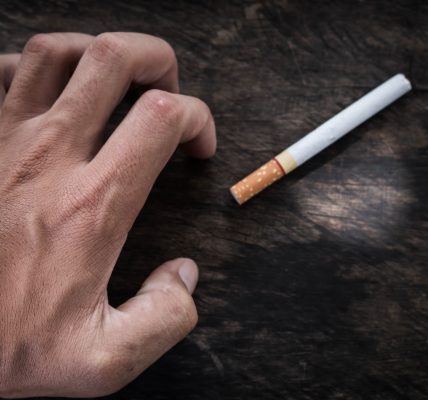Nature vs. Nurture: New Study Identifies a Predisposition to Addiction

It is often quoted that 50% of addiction is genetic. That suspiciously round number is the result of tracing addiction through the family tree. It simply means that half the people seeking treatment for addiction self-report being parented by someone with a substance use disorder (SUD).
It seems to me that if half the people seeking treatment for an SUD have a family history of SUD, and half don’t, that should indicate it is not a genetic predisposition. The likelihood of you having an SUD if a parent had an SUD is roughly 50-50. That’s not exactly the way the math works out, however. As my colleague, Pat Hartman, has shown here, addiction-proneness can be passed down, but the genetic component is highly overrated.
Thanks to the Adolescent Brain Cognitive Development Study (the ABCD study), researchers have been able to look at brain scans of children from the age of nine years old and see how they have changed over the years as a result of substance abuse. The research was led by Alex P. Miller, assistant professor of psychiatry at the Indiana University School of Medicine in Indianapolis.
Dr. Miller went into the study with a goal of determining, “What are the neuroanatomical features associated with early substance use initiation, and do they precede initiation?” The study involved 9,804 children with a baseline age of 9.9 years; 52% were male, and 76% were white. More than one-third self-reported substance abuse before the age of 15. An analysis of MRI scans revealed the following differences:
- Surprisingly, early onset substance abuse is associated with larger brain size, not smaller, as previously speculated.
- Early onset substance abuse resulted in a thinner prefrontal cortex (PFC), but a “thicker cortex in all other lobes.”
- The majority of these brain structure features were evident among substance-naive children at baseline who later initiated.
These fascinating results generate more questions than they answer. For example, if brain size correlates with a greater tendency toward substance abuse, how did those brains get so big? Was it the result of neonatal care, good nutrition, high income, or genetic luck? Why did some brains not grow as much?
To say that people are predisposed to addiction if they have big brains at age 9 seems to me to be irresponsible unless you also know how their brains got bigger or smaller. If children grow bigger brains or thinner PFCs due to stress during childhood, then the tendency toward addiction might be caused by childhood stress.
A review of the scientific literature by a group of Australian researchers was just published in the Adolescent Research Review. They looked at 22 studies involving the impact of early life traumatic experience on white matter development. They found “compromised white matter development” compared to healthy controls. The researchers explain the implications:
Compromised white matter integrity can have extensive impacts on adolescent development and associated functioning, including emotional dysregulation, mood instability, executive dysfunction, and sensorimotor impairments.
So Reason magazine’s attempt to make it sound like the “structure of brains incline[s] some people toward using those substances” fails to take into account how those brains developed. As we have shown here at AddictionNews, more than half of the people in treatment for addiction are self-reported victims of sexual abuse. So which came first, the physical abuse or the substance abuse?
Science says physical abuse precedes substance abuse. If we want healthy, resilient adolescents, we should make greater efforts to raise them in non-violent environments. This is particularly true in the prenatal and postnatal months of rapid brain development. If we want stronger brains at age nine, we need to start by providing security from the womb on.
One of the most successful anti-addiction programs we have written about here is Parent-Child Interactive Therapy (PCIT). It involves training for new parents in reading and responding to the emotional cues of their babies. It results in significantly less parental stress, which leads to significantly less infant stress. By providing new parents with the time and training they need to pay attention to their child’s needs, they foster an environment of care rather than fear.
Infants and preschool children can further develop their resilience through good behavior games that strengthen working memory, impulse control, and self control. When it comes to keeping kids off drugs, art classes and music classes work better than D.A.R.E. or other scare tactics and drug education programs. Games that encourage children to project themselves into the future (episodic future thinking) work wonders for self-esteem and self-control.
Strong brains can be developed through nutrition, attentive care, and security. They can be further strengthened through storytelling. When children are guided in creating their own stories, they show significant improvement in reward response, impulse control, behavioral control, and mental resilience. Research shows that these are the traits that lead to an ability to prioritize goals and resist drug abuse.
I’m glad that we have research that allows us to see what is happening to the brain as we age. However, I think it’s more important to know how a brain gets damaged than to know that a damaged brain results in harmful behavior.
Written by Steve O’Keefe. First published July 2, 2025.
Sources:
“Neuroanatomical Variability and Substance Use Initiation in Late Childhood and Early Adolescence,” JAMA Network Open, December 30, 2024.
“Adolescent Brain Development Following Early Life Stress: A Systematic Review of White Matter Alterations from Diffusion Tensor Imaging Studies,” Adolescent Research Review, May 2, 2025.
“Does Drug Use Lead to Addiction, or Are Some Brains More Prone To Use Drugs?,” Reason, July 2025.
Image Copyright: jeniabroggi.




